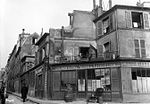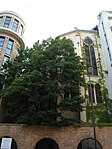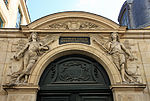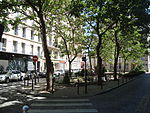Irish College in Paris
1605 establishments in FranceColleges of the University of ParisEngvarB from October 2013Former Catholic seminariesIrish diaspora in Europe

The Irish College in Paris (French: Collège des Irlandais, Latin: Collegium Clericorum Hibernoram) was for three centuries a major Roman Catholic educational establishment for Irish students. It was founded in the late 16th century, and closed down by the French government in the early 20th century. From 1945 to 1997, the Polish seminary in Paris was housed in the building. It is now an Irish cultural centre, the Centre Culturel Irlandais.
Excerpt from the Wikipedia article Irish College in Paris (License: CC BY-SA 3.0, Authors, Images).Irish College in Paris
Rue des Irlandais, Paris 5th Arrondissement (Paris)
Geographical coordinates (GPS) Address Phone number Website Nearby Places Show on map
Geographical coordinates (GPS)
| Latitude | Longitude |
|---|---|
| N 48.8440412 ° | E 2.3459544 ° |
Address
Centre Culturel Irlandais
Rue des Irlandais
75005 Paris, 5th Arrondissement (Paris)
Ile-de-France, France
Open on Google Maps








